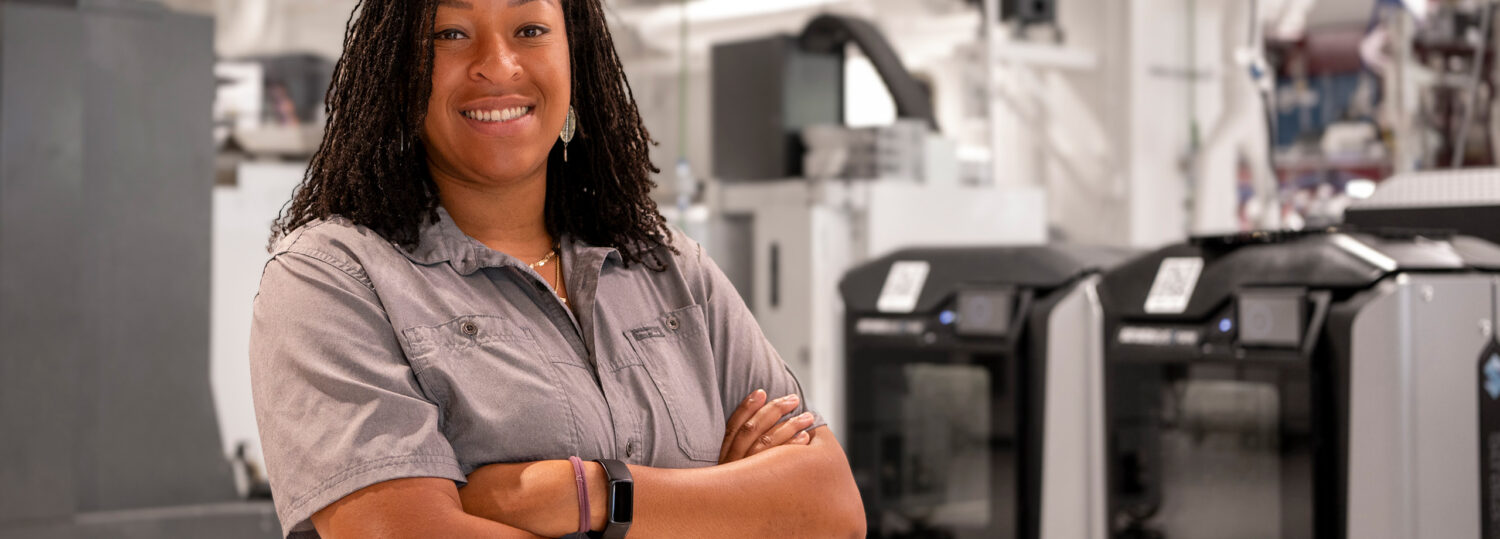Original article by Amy Meadows and Sonya Stinson at Diversity in Action
When Jessica Bryant was medically separated from the Navy in 2019, she wasn’t sure what she would do next. She had an undergraduate degree in mass communication from Wake Forest University, where she played basketball, as well as six years of experience as both an avionics electronics technician and safety officer in the military and an interest in engineering and manufacturing. She took a job as a maintenance manager for STERIS AST, a commercial sterilization company that serves the medical device industry. It was there that Bryant discovered where her passion truly lies, which led her to a new path.
“At STERIS, I got firsthand experience working in a commercial field and seeing where there were so many gaps in optimization that could have made the maintenance job easier. I wanted to figure out how to make sure that our support teams were getting the most optimal use out of their equipment,” she explains. That inquiry led her back to school at North Carolina State University (NC State}, where she is a graduate student in industrial and systems engineering. Her focus in the two-year program, of which she has completed one year, is on automated systems within the manufacturing sector.
“So many facilities want to become more automated, and they need to know how to roll that out so employees can jump in and understand what they need to do with the technology,” she says. “My goal is to help a company or an entity in that sense. I want to help improve the processes and find the connection that shows humans how to really work with technology. A lot of people fear technology because they feel like they are going to be out of a job. But technology is supposed to make that job easier. Technology is always going to be there, so it’s best to work with it and not against it.”
As part of her studies, Bryant is a graduate research assistant for NC State’s Center for Additive Manufacturing and Logistics (CAMAL) lab. She works on various projects, including one with Computer Numerical Control (CNC) machining to analyze solutions for governmental needs and another through which she studies laser-printed metal materials to examine the structure’s layer pattern and reactions to vibrations using a vibrometer. All of the work falls under the industrial engineering umbrella, and she is excited to see where her efforts take her. No matter where that is, she not only hopes to do valuable work in the engineering arena but also to inspire others along the way, particularly those from underrepresented communities who might be considering a career change into a STEM field.
“I’m a Black woman. I’m a disabled veteran. I’m a former D1 athlete with a bachelor of arts degree. I decided at 35 to return to school to pursue a master’s degree in engineering. I have successfully completed my first year and can confidently and proudly say that representation matters,” she says. “I hope to inspire others with diverse backgrounds the way that my family, my mentors and past prominent leaders have inspired me. I encourage others to pursue their dreams in STEM and become that diverse representation that society ultimately needs.”

